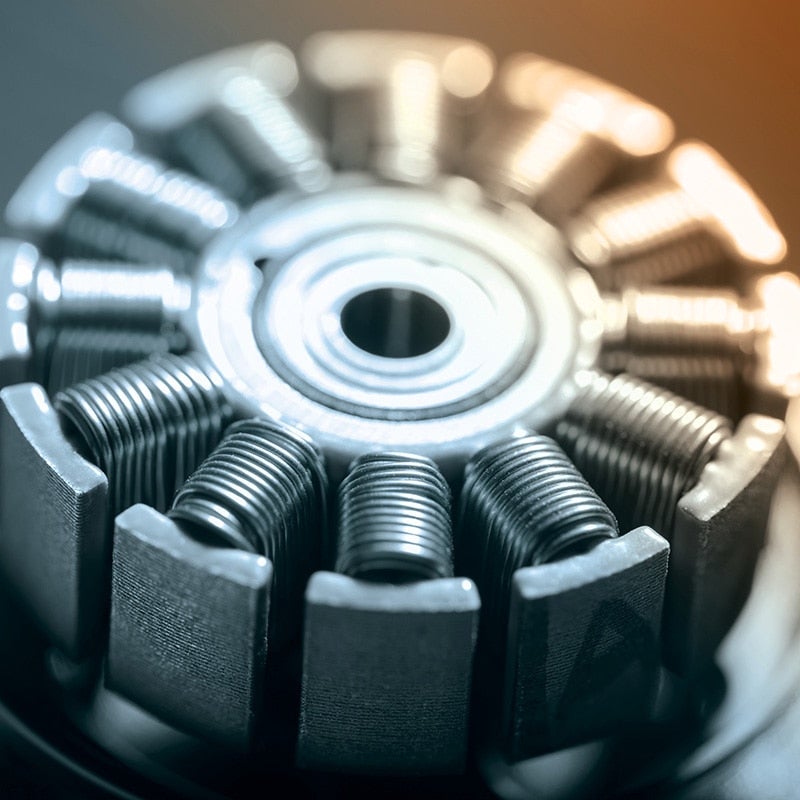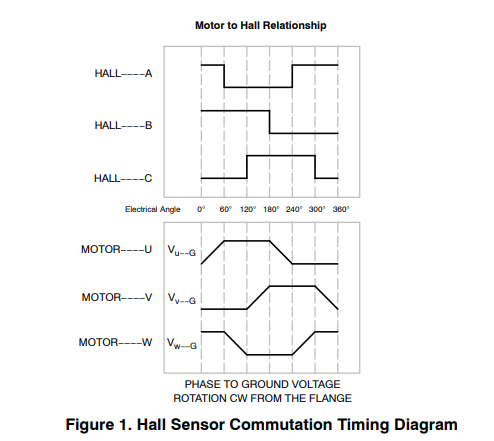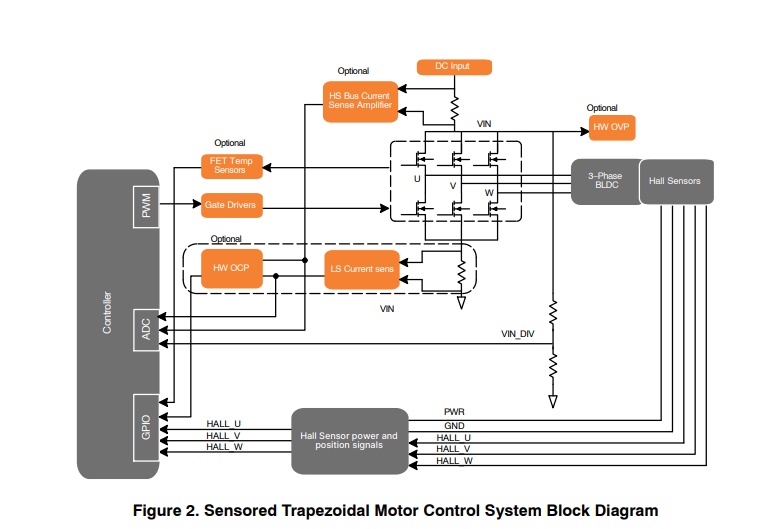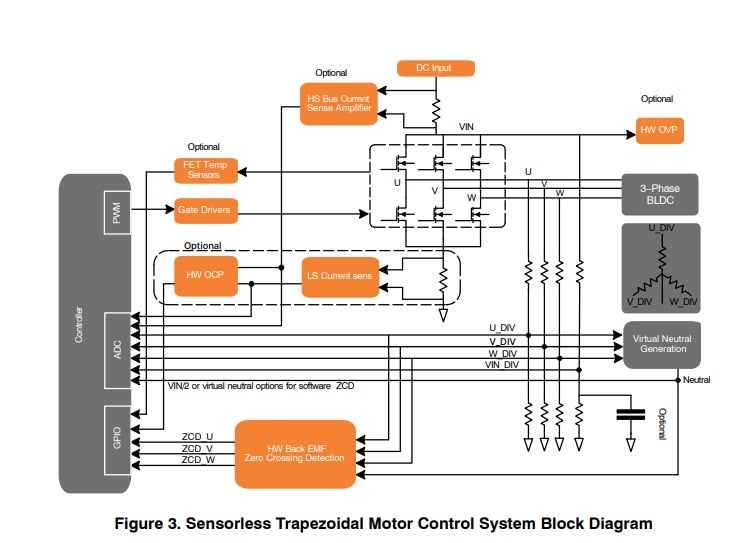Trapezoidal control, one of the simplest brushless DC (BLDC) motor control methods, applies square-wave currents to the motor phases aligning with the BLDC motor’s trapezoidal back-EMF profile for optimum torque generation. Trapezoidal control for BLDC is ideal for implementing motor control system designs for numerous applications, including white goods, refrigeration compressors, HVAC blowers, condensers, industrial drives, pumps, and robotics.
The MOSFETs constituting the three-phase inverter to drive the motor assume six on/off state combinations, resulting in six possible stator field orientations within the rotor magnetic field’s plane of rotation. Thus, the method is also called six-step, or 120°, block commutation. The six possible inverter states must follow a specific sequence depending on the desired rotation direction of the motor so that the stator and rotor field orientation arrangement produces maximum torque. Rotor position feedback, generally achieved with hall sensors mounted on the motor (sensored) or by sensing the back-EMF of the motor phases while rotating (sensorless), determines proper commutation timing.
Sensored trapezoidal control does not require any voltage or current feedback signals for operation. Instead, it uses position feedback from Hall sensors to determine the correct sequence for energizing the phases of the motor. Hall sensors, mounted on the motor, sense the rotor position through the Hall Effect caused by the rotor permanent magnet’s rotating magnetic field. Proper commutation, even at startup, is possible because the rotor position information is present even at zero speed.
Sensorless trapezoidal control uses the back-EMF generated by the motor’s rotation to determine the correct motor commutation sequence. For trapezoidal control, only two motor phases are energized at a time. Because no current flows in the non-energized phase, the back-EMF can be directly sensed at that time. During the non-energized phase, the back-EMF is either linearly increasing or decreasing. Most back-EMF position feedback techniques for trapezoidal control rely on a method involving back-EMF zero-crossing detection (ZCD). The back-EMF is monitored to determine when it crosses a reference point—either the neutral motor voltage or half the DC bus voltage.
While sensored trapezoidal control is easier to implement, it requires increased cost due to the hall sensors installed in the motor. It also requires more wiring from the motor, which may not be possible in some environments. Sensorless control is more complex, must be tuned for specific loads or operating conditions, and may have difficulty starting up under heavy loads. However, sensorless control is well suited for applications where the load profile is well known or increases with speed, such as a fan.
Additional Design Considerations
When considering a BLDC motor control design for your application, you’ll want to take into account some other critical design factors, including:
- Over Current Protection (OCP)—Hardware, software, or both, can achieve OCP for current limiting and mitigation of hard faults.
- Over Voltage Protection (OVP)—Hardware, software, or both can protect the motor from damaging voltages.
- Over Temperature Protection (OTP)—Important to monitor MOSFET operating temperatures in the inverter, especially in environments with wide temperature ranges.
- MOSFET Selection—onsemi’s comprehensive portfolio of highly efficient shielded gate trench type of MOSFETs can be tailored to your specific design requirements to achieve superior performance for the motor control system.
Highly integrated motor control solutions enable energy savings. The benefits of trapezoidal BLDC control include a simple control algorithm, high efficiency, and a simple motor that enables long life and lower operating costs. Trapezoidal control combined with essential protection and design techniques can be one of the most efficient methods of driving an electric motor for power tools and robotics by improving the control and accuracy of the motors.
Learn more about the BLDC motor control and these additional considerations in our Trapezoidal Control of BLDC Motors white paper.



